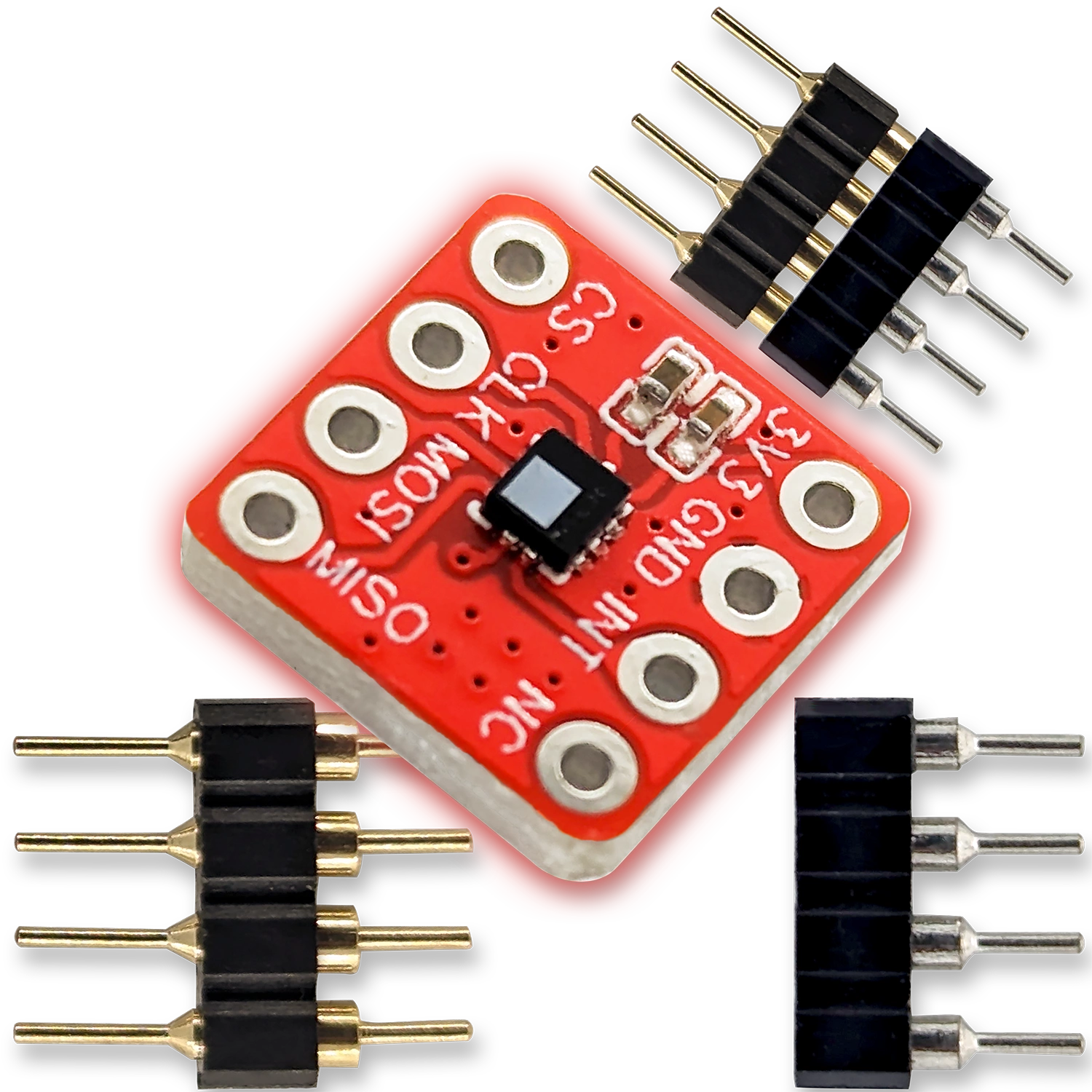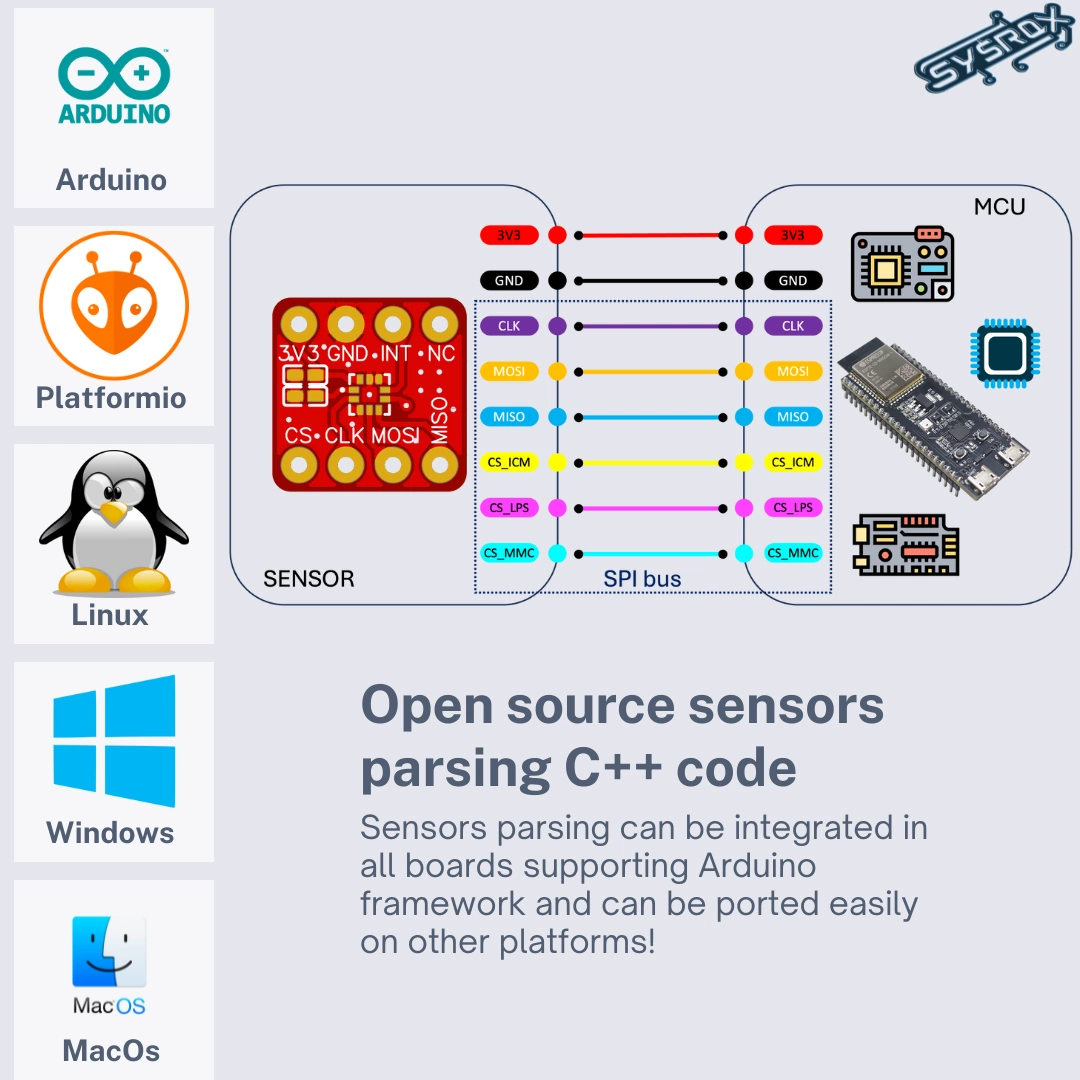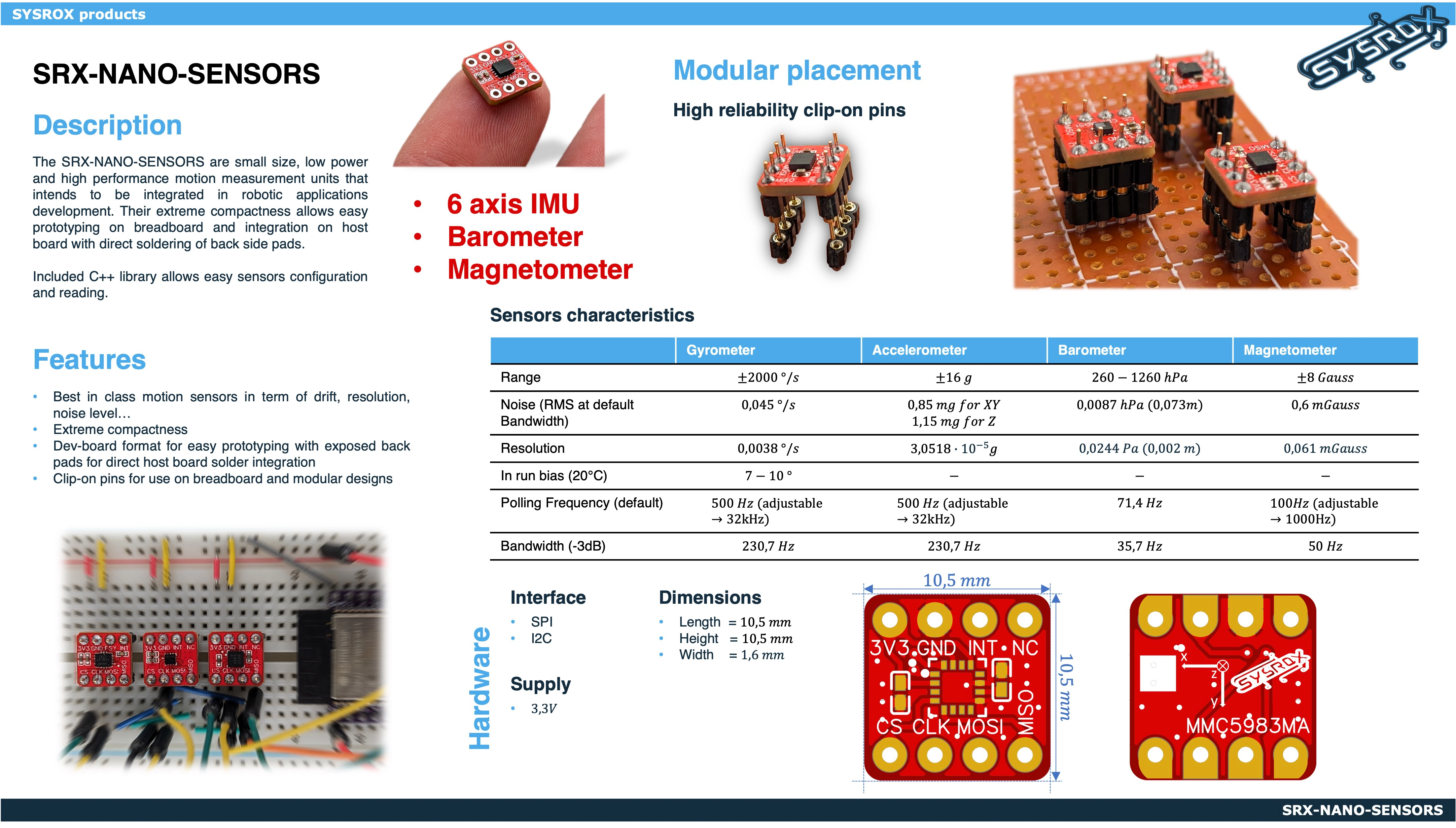Nano Sensor: LPS22HB High Precision Barometric Pressure/Altitude/Temperature Sensor Nano Barometer with SPI Communication for Arduino or Raspberry
Brand:
Sysrox
Name:
SRX-BARO00-DEV
ASIN:
B0CZF62QJ2
Dimension:
1.05 x 1.05 x 0.2 cm
8.99 €
Where to Buy
Keypoints
- SYSROX PRECISION BAROMETER enables pressure measurements with a range of 260 hPa-1260hPa (-1876m-10100m relative to sea level) and temperature, usable as an altimeter... Reading frequency up to 75Hz.
- NEW GENERATION SENSOR (LPS22HB) HIGH PRECISION replacing older BMP180-BMP280 less performing. Improved resolution and noise level.
- FULLY CUSTOMIZABLE SOFTWARE for reading and configuring the sensor, compatible with Arduino, perfect for ESP32 or Teensy 4.
- MINIATURE DEVELOPMENT BOARD 1cm x 1cm with 2.54 mm pin spacing for easy prototyping of robotic applications, drones... Clipable prototype pins allowing use on a breadboard or non-permanent mounting on a support card.
- ONLINE COMPREHENSIVE DOCUMENTATION enabling easy utilization of the board and extension of the offered functionalities.
- The offered board only includes the sensors and no microcontroller, which must be added additionally and connected to the board to benefit from the stated functionalities.
The SRX-BARO00-DEV is a high-performance barometer that can be used as a base for an altimeter, for example.
It includes:
- Barometer: ST LPS22HB
The extreme compactness of the board makes it ideal for integration into robotic applications such as drones, rovers...
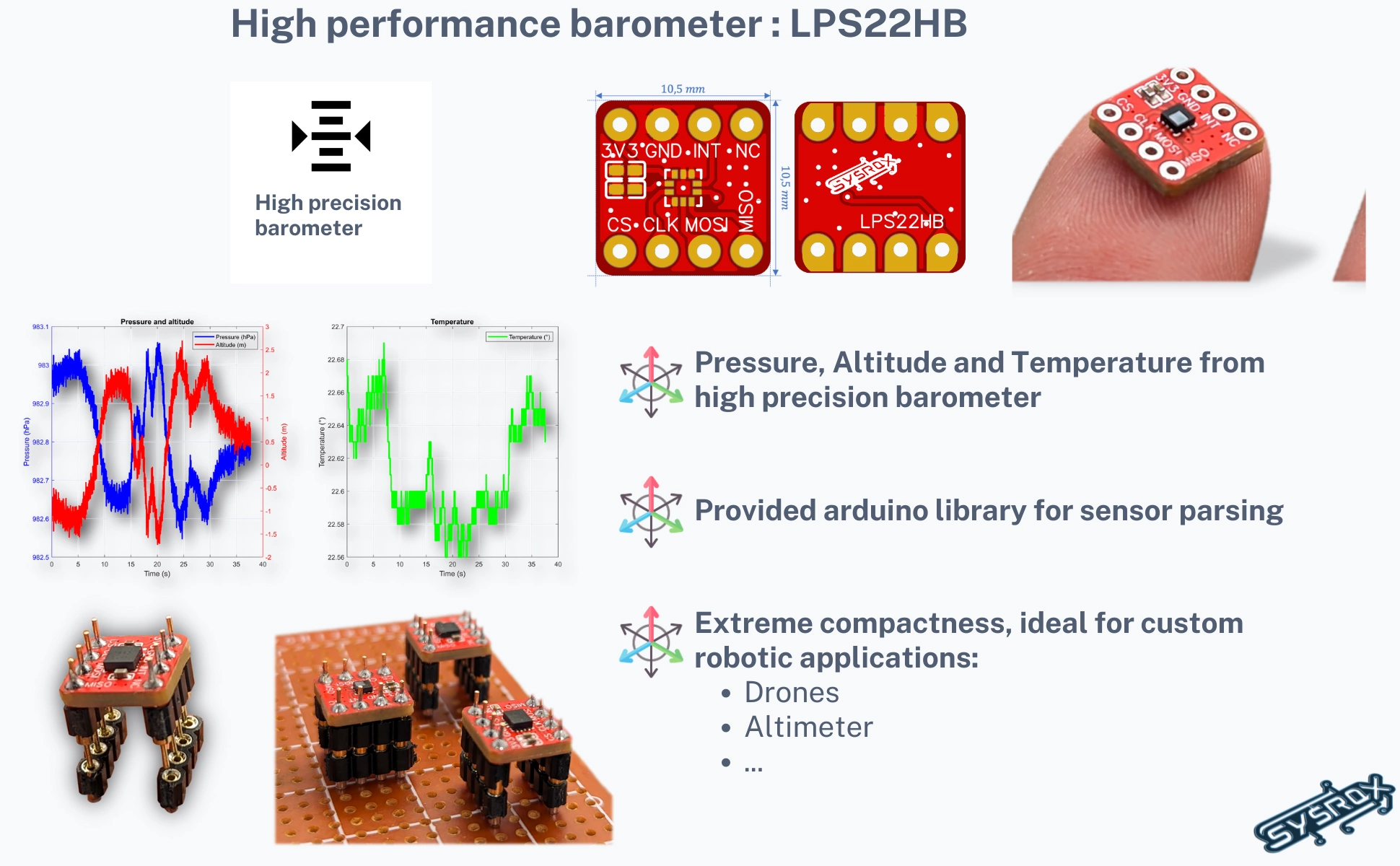
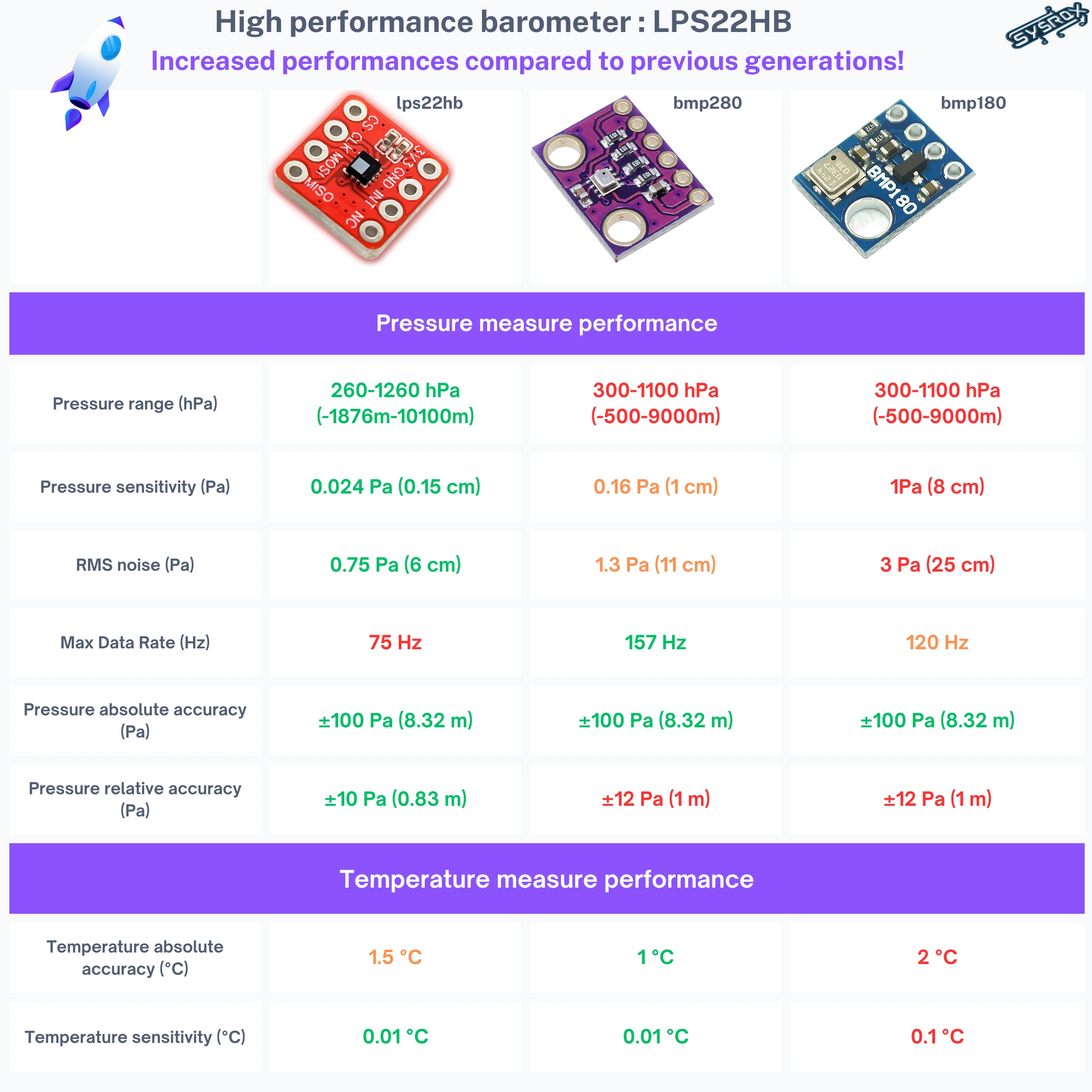
One of the best consumer grade barometer!
The board includes one of the best consumer-grade sensor in terms of noise, resolution, sensitivity... It is therefore a significantly more performing alternative to the older bmp085, bmp180 and bmp280...
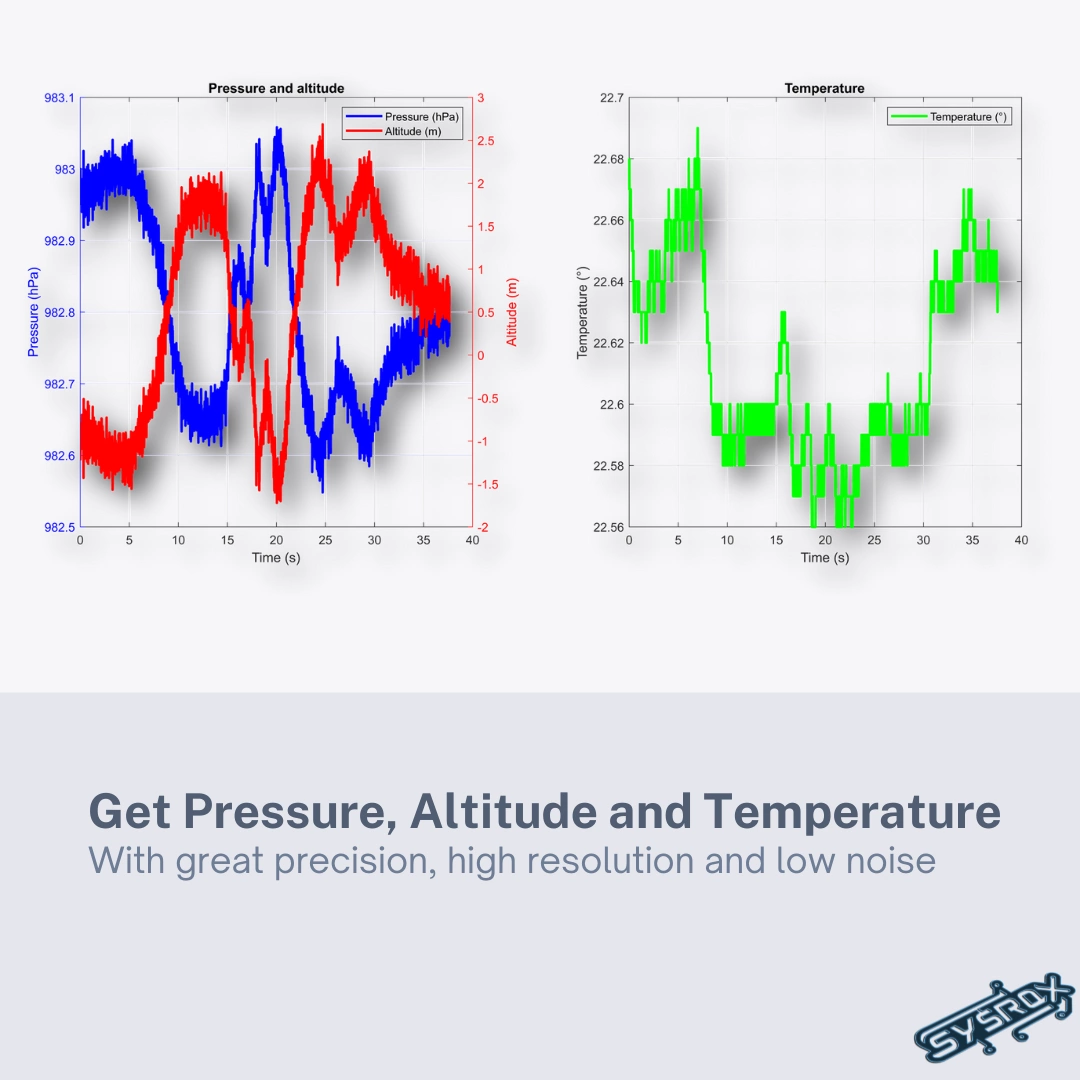
Utilization of sensor data
- Embedded software 100% compatible with Arduino!
- Full access to raw or processed sensor data, allowing complete integration freedom into any project
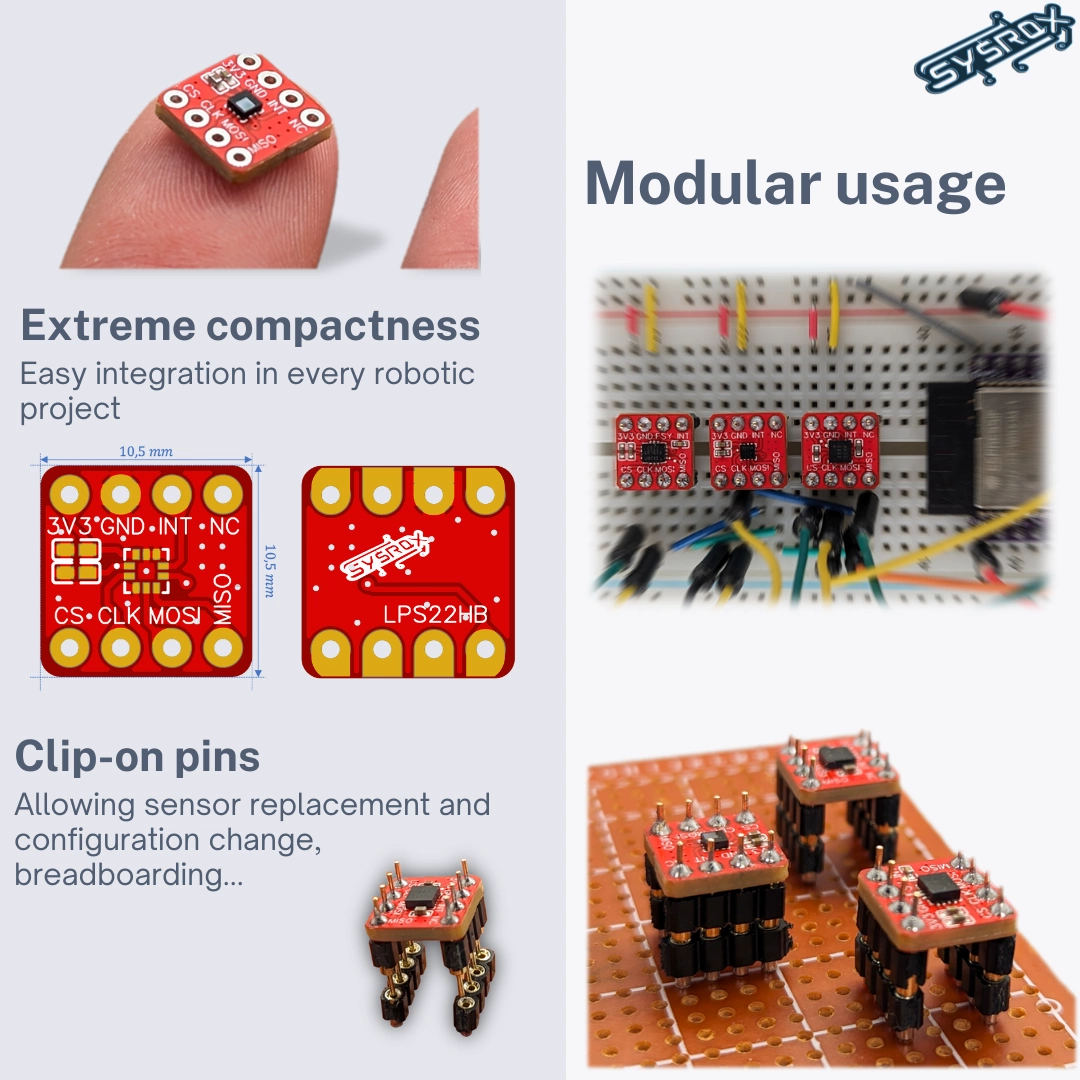
Compactness and modularity
The use of clip-on pins allows for easy mounting on a breadboard or semi-permanent mounting on a host board. The pads on the back of the board and its compactness enable integration into any robotic project!
Included:
- Board
- Male and female clip-on pins
- Straight pins
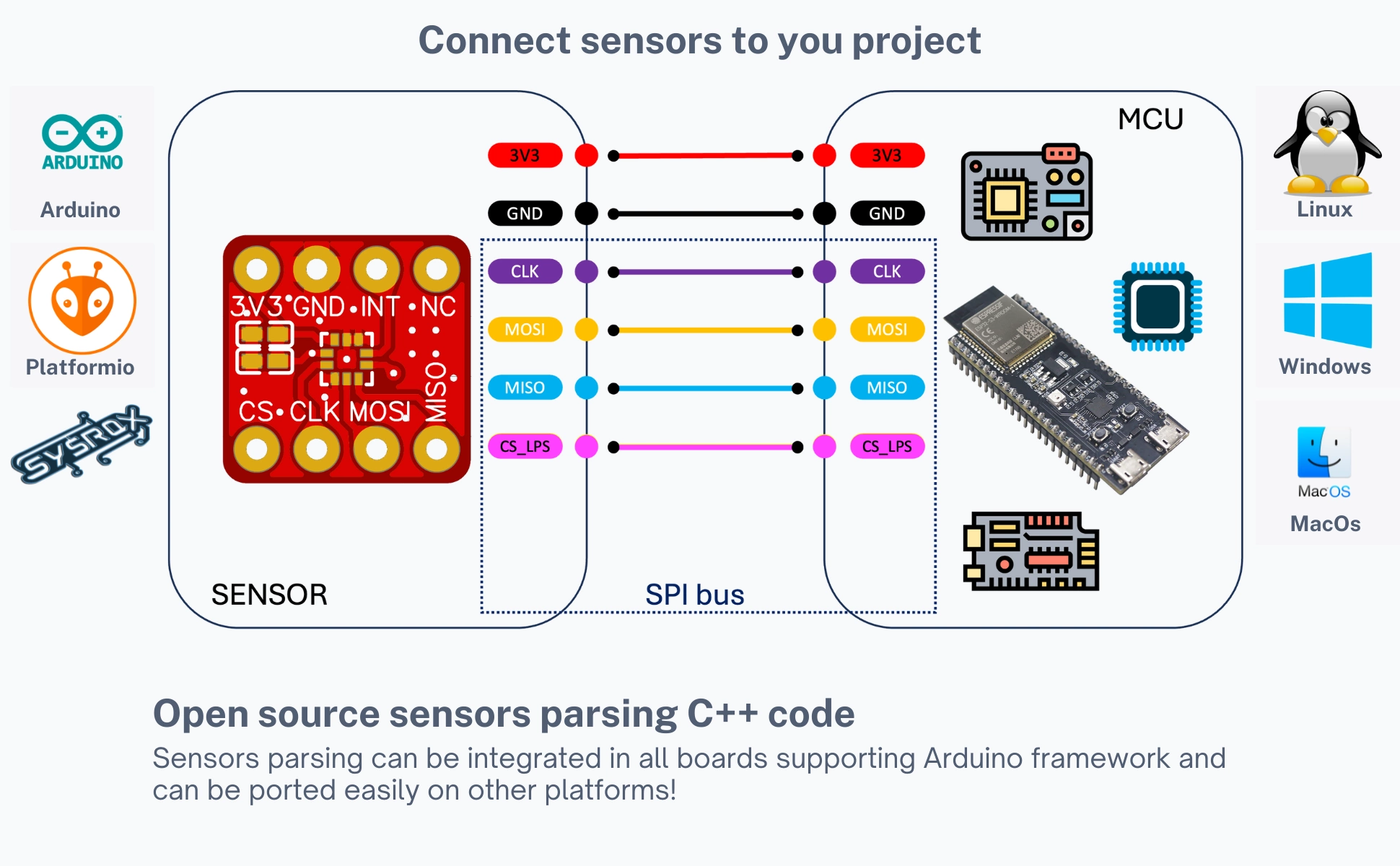
General FAQ
How are designed sensor boards?
Sensors are chosen based on their low noise level, low drift, high resolution and are integrated in the most convenient form factor for robotic applications development. If the board contains multiple sensors they are linked by a unique high speed SPI bus.
Are devices 5V tolerant?
No. Except if specified, all devices only supports 3.3V for power supply and communication, which allow more compact designs.
Do all devices come with software support?
Yes. Codebase is organised as libraries and applications linked by a manifest file. A project is composed by an application and necessary libraries. All sensors boards come with a C++ parsing library at minimum. 6dof and 10dof devices come with a sensors fusion code. All code is fully tunable and easy to integrate in your project.
What is supported hardware for C++ libraries?
All boards supporting Arduino Framework should be compatible with sensors parsing libraries. Some functionalities are only available on specific hardware like CAN communication (ESP32 only), logging (ESP32 and teensy 4.X)... Sensors fusion is hardware agnostic and should supported on all platforms. As it is distributed as precompiled .a file, do not hesitate to Contact US if you need support for a specific platform.
What are the requirements for 10dof sensors fusion?
As the fusion algorithm is based on an Extended Kalman Filter, it requires high computational power. It is recommended to use a microcontroller with a FPU (Floating Point Unit) like ESP32 or Teensy 4.X. Generally we recommend to use a microcontroller with at least the computational power of one ESP32 core.
What does include documentation?
The documentation includes a quick start guide for every device. For each library a detailed API documentation is provided with examples of how to use it with any project. For sensors fusion, a detailed explanation of the algorithm is provided and a tuning guide is proposed.
Where are devices with included microcontrollers?
These boards are currently tested and should be available in the near future. 2 models are currently developped featuring a dual core ESP32-S3 with wifi and bluetooth capabilities. The most advanced model will include CAN transceiver, GPS module with antenna, SD card slot and advanced power management.

